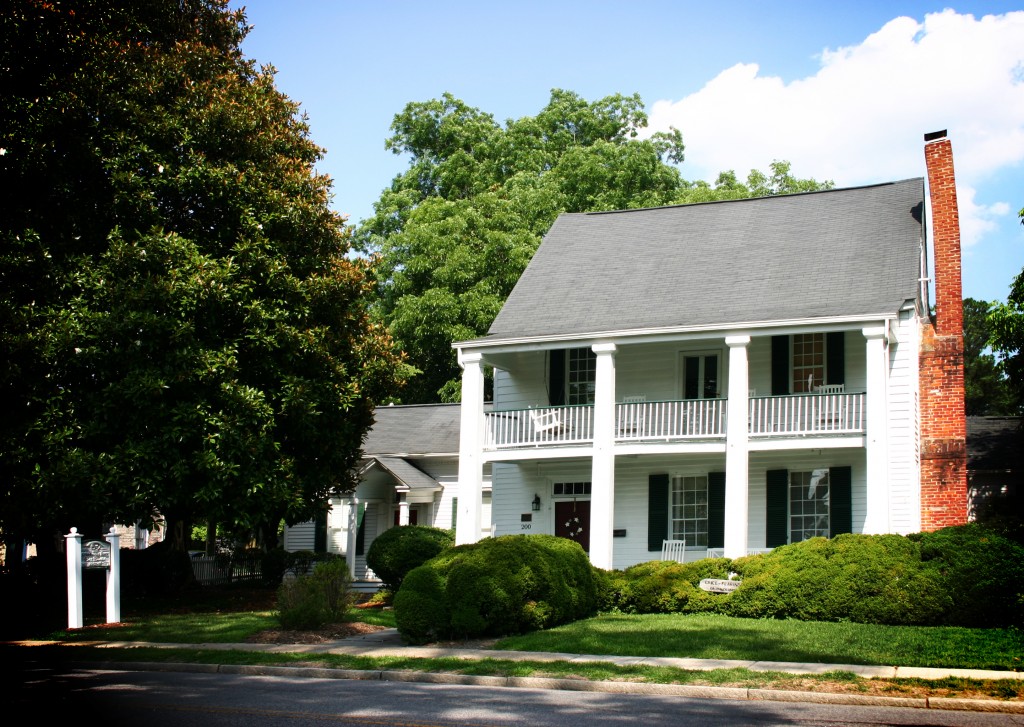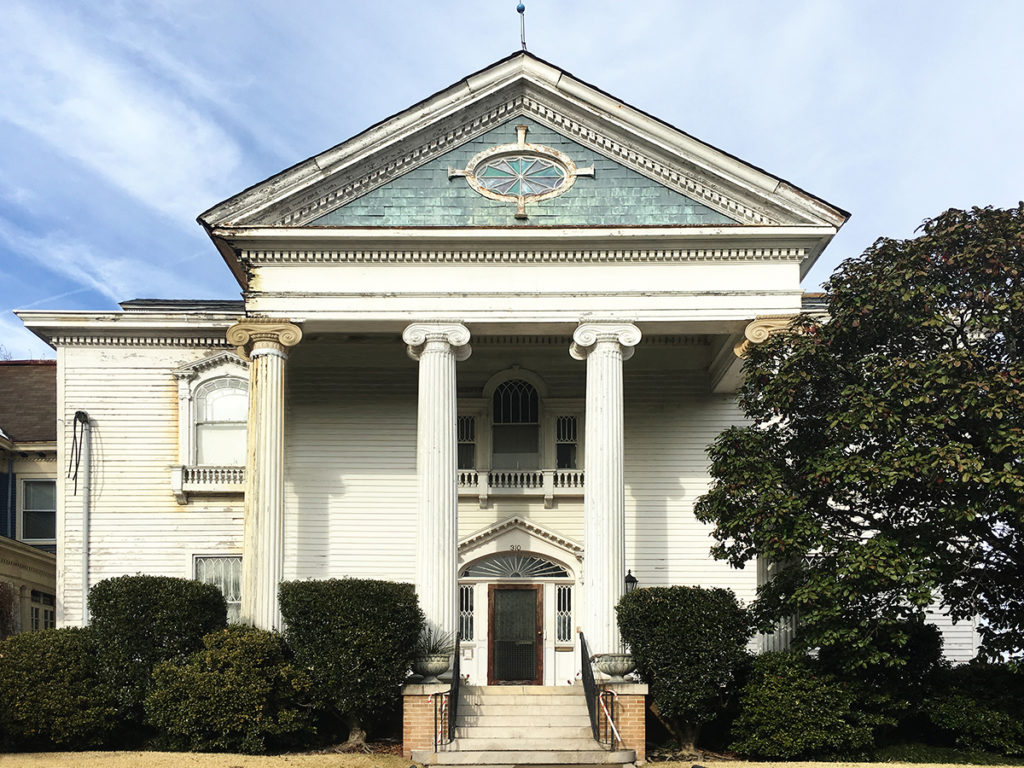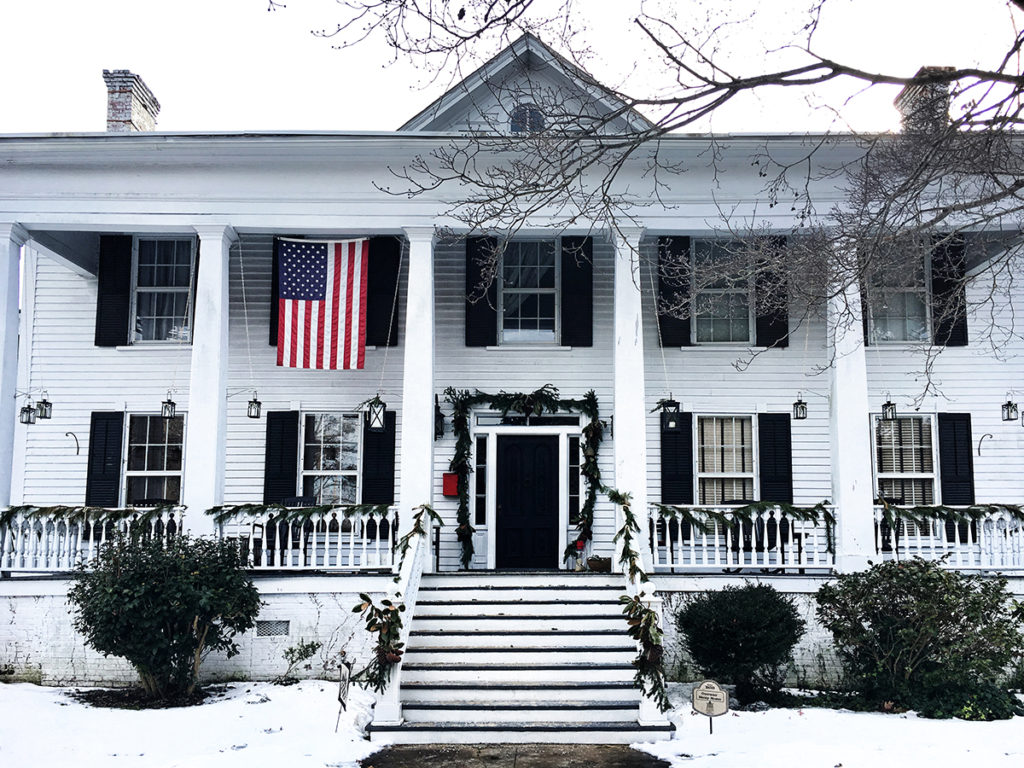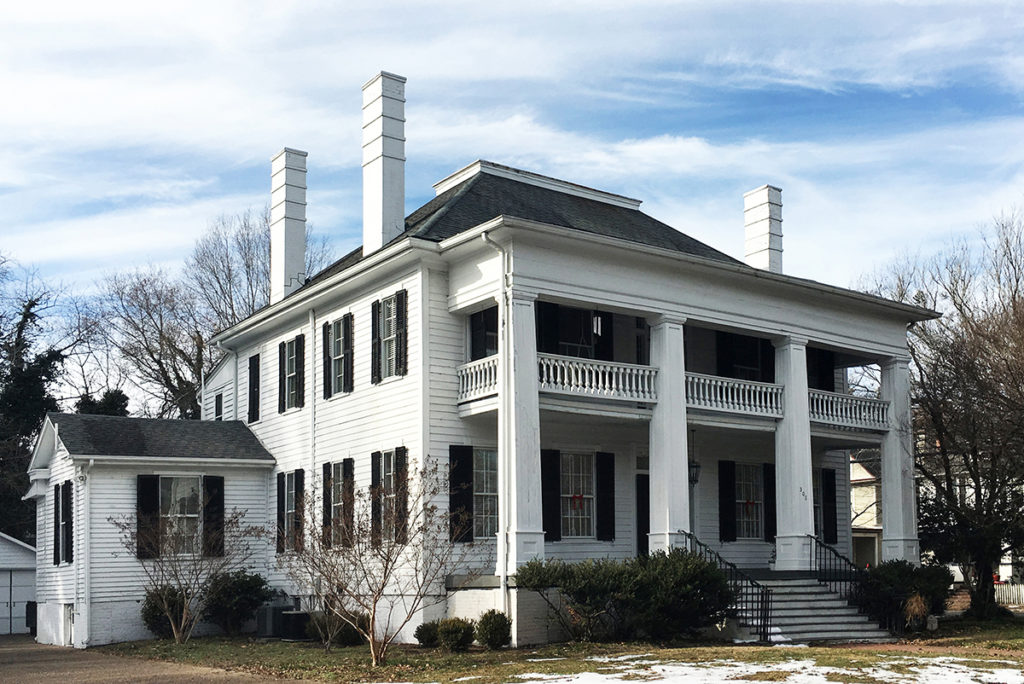Downtown Elizabeth City’s residential area boasts a plethora of houses of historical and architectural interest. Here is a look at five stand-out homes on the walking tour: Number one on the list is the Charles O. Robinson House at 201 E. Main Street. This monumental Neo-Classical Revival style home is the city’s most magnificent private residence. Situated across from the Pasquotank County Courthouse, the house was built in 1914 as a wedding present from Benjamin Blades, a wealthy New Bern lumberman, to his daughter Ivy Blades Robinson. Ivy married Charles Oakley Robinson, son of Charles Hall Robinson, one of the city’s most successful industrialists. A member of the Robinson family still occupies the home.
 Grice-Fearing House Bed & Breakfast. Photo credit Liza Franco.
Grice-Fearing House Bed & Breakfast. Photo credit Liza Franco.Around the corner, at 200 S. Road Street, resides one of Elizabeth City’s oldest homes, the Grice-Fearing House. This double-pile frame house was erected for Francis Grice, a Pennsylvania native, soon after he purchased the lot in 1798. Upon Grice’s death his widow, Mary, married Isaiah Fearing, who was the first of five generations of the Fearing family to occupy the house. The home remained in the Fearing family until 1989. It is now the Grice-Fearing House Bed and Breakfast.
 Judge Isaac M. Meekins House. Photo credit Liza Franco
Judge Isaac M. Meekins House. Photo credit Liza FrancoAt 310 W. Main Street is the Judge Isaac M. Meekins House, currently under renovation. Completed in 1903, this generously scaled Neo-Classical Revival style home reflects the prosperity and ambitions of Elizabeth City at the turn of the century. President Howard Taft spent the night in the home as Judge Meekins’ guest, on a brief trip to Elizabeth City in 1914. Judge Meekins was appointed to a Federal judgeship in 1925. He was assigned to New York City as a visiting judge during the Prohibition era, where he tried valiantly to enforce Prohibition laws in the city.
 The Overman-Sheep House. Photo credit Liza Franco
The Overman-Sheep House. Photo credit Liza FrancoThe Overman-Sheep House at 401 W. Main Street is a fully-realized two-story Greek Revival style house with a center-hall plan. This impressive residence was built about 1859 for Reubin F. Overman, the cashier at Farmers Bank. The house was sold in 1891 to educator Samuel Lloyd Sheep. Sheep operated a private school, the Elizabeth City Academy, but lobbied tirelessly for a free public school system. When this was achieved in 1907, Sheep closed his school and became superintendent of the Elizabeth City Public Schools. He is still revered locally as a giant of education.
 Richardson-Pool-Glover House. Photo credit Liza Franco
Richardson-Pool-Glover House. Photo credit Liza FrancoJust off West Church Street is the Richardson-Pool-Glover House at 301 Culpepper Street. Elizabeth City’s largest antebellum home, it is the only home in the city to follow the fully-developed two-story double-pile center hall plan. The house was built in the 1850s for Daniel Richardson, a local merchant. At his death, it was sold to George Decatur Pool, a wealthy farmer and philanthropist. Pool’s heirs sold it to businessman William Charles Glover, who served as mayor from 1888 to 1895. These five homes are some highlights of the downtown walking tour, but you will see many other interesting residences along the way. So grab a walking tour booklet, put on your walking shoes, and spend an afternoon strolling the streets of downtown Elizabeth City!  Marjorie Berry is a native of Pasquotank County, Graduated with a BA degree in English from the University of North Carolina at Chapel Hill. Worked at the Smithsonian's National Museum of American History in Washington, DC for ten years. Has been researching and writing scripts for the Historic Elizabeth City Ghost Walk since 2003. Wrote the book, "Legendary Locals of Elizabeth City." Serve as a board member for Friends of the Museum of the Albemarle. Loves to travel and spend time at Nags Head.
Marjorie Berry is a native of Pasquotank County, Graduated with a BA degree in English from the University of North Carolina at Chapel Hill. Worked at the Smithsonian's National Museum of American History in Washington, DC for ten years. Has been researching and writing scripts for the Historic Elizabeth City Ghost Walk since 2003. Wrote the book, "Legendary Locals of Elizabeth City." Serve as a board member for Friends of the Museum of the Albemarle. Loves to travel and spend time at Nags Head.

Now is the perfect time to plan a Labor Day holiday trip to northeastern North Carolina, a welcoming cluster of small towns with offerings for the foodie, the history buff, the sportsman and the arts and antiques enthusiast. ... READ MORE